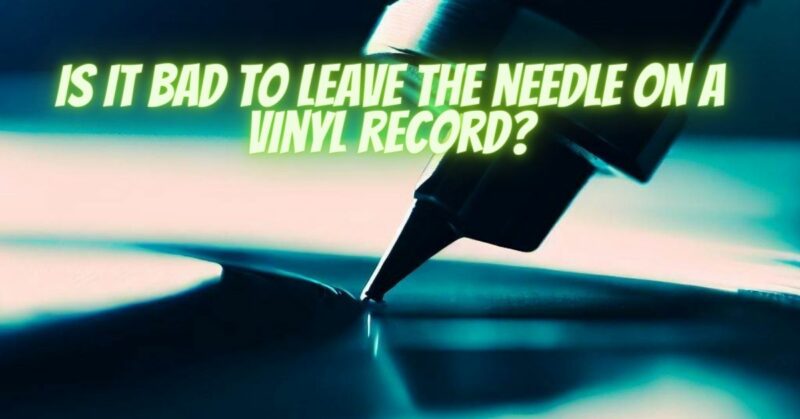Vinyl records offer a timeless listening experience that many audiophiles cherish. However, the question of whether it’s detrimental to leave the needle (stylus) on a vinyl record when not actively playing it remains a point of discussion. This article delves into the potential effects of leaving the needle on a record and provides insights into how this practice can impact both the vinyl record and the overall listening experience.
Understanding the Mechanics
The needle, or stylus, is an essential component of a turntable that interacts with the grooves of a vinyl record to produce sound. When playing a record, the stylus follows the grooves, translating the physical bumps and valleys into electrical signals that are amplified and turned into audible music. However, when the stylus remains on the record without playing, certain factors come into play.
The Impact of Leaving the Needle on the Record
While briefly resting the stylus on a record before play doesn’t pose significant risks, extended periods of inactivity can lead to potential issues:
- Groove Damage: Prolonged contact between the stylus and the grooves can cause wear and groove damage, especially if the turntable’s anti-skate mechanism is not correctly adjusted. This wear can lead to reduced sound quality and affect the record’s longevity.
- Record Wear: Leaving the stylus on a single spot of the record can lead to uneven wear on that area, potentially causing distortion and impacting the balance of the sound over time.
- Dust and Debris: The stylus can attract and accumulate dust, dirt, and debris from the record’s surface. These particles can then be transferred back onto the record’s grooves, causing surface noise and affecting sound quality.
Preventing Stylus Damage
It’s also important to consider the potential impact on the stylus itself:
- Misalignment: Extended contact between the stylus and the same groove can lead to misalignment of the stylus assembly. This misalignment can affect tracking accuracy and lead to further groove damage.
- Excessive Pressure: In some cases, the stylus may exert excessive pressure on the grooves when left in one place for too long. This pressure can lead to groove distortion and wear.
Best Practices for Stylus Care
To ensure the health of both your vinyl records and the stylus, consider the following practices:
- Use the Cueing Lever: Utilize the cueing lever on your turntable to gently lower and lift the stylus onto and off the record, minimizing prolonged contact.
- Adjust the Anti-Skate: Properly calibrate the anti-skate mechanism on your turntable to prevent excessive pressure on the stylus.
- Regular Cleaning: Keep your records and stylus clean to reduce the accumulation of dust and debris that can impact playback quality.
- Turn Off Amplification: If you’re not actively playing the record, ensure that the amplification (preamp) is turned off to avoid amplified noise from the stylus.
While briefly resting the stylus on a record before play isn’t generally harmful, leaving it on a record for extended periods can lead to groove and stylus wear, as well as potential damage to the overall listening experience. By adhering to proper turntable techniques, regularly cleaning both records and the stylus, and being mindful of stylus placement, you can enjoy the full beauty and authenticity of vinyl music while ensuring the longevity of your cherished collection.


